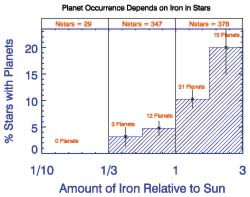
A comparison of 754 nearby stars like our sun – some with planets and some without – shows definitively that the more iron and other metals there are in a star, the greater the chance it has a companion planet.
“Astronomers have been saying that only 5 percent of stars have planets, but that’s not a very precise assessment,” said Debra Fischer, a research astronomer at the University of California, Berkeley. “We now know that stars which are abundant in heavy metals are five times
Microscopes are not the only tools available to study disease. A new ESA project employs satellites to predict and help combat epidemic outbreaks, as well as join the hunt for the origin of the deadly Ebola virus.
Ebola haemorrhagic fever kills many people in Central Africa each year. It can cause runaway internal and external bleeding in humans and also apes. What remains unidentified is the jungle-based organism serving as the virus’s host.
To assist search efforts, from next y
In their quest for a vaccine that may one day routinely protect against heart attacks and strokes, cardiologists at Cedars-Sinai Medical Center and their colleagues in Sweden have isolated a key step in the mechanism that leads to vascular plaque buildup and blood clot formation.
In mice genetically predisposed to quickly develop atherosclerosis, the researchers were able to trigger a protective immune response, significantly increasing the level of immunoglobulin gamma G (IgG), an antibody
Rutgers geneticist Tara Matise and her colleagues have produced a map that will help pinpoint the genes linked to such serious diseases as diabetes, high blood pressure and schizophrenia.
This linkage map is based on the amount of the interaction or recombination taking place among nearly 3,000 genetic markers whose positions are known. The markers used for the map are single-nucleotide polymorphisms (SNPs) – the variations of a gene that people may carry at one point on their DNA.
Using XMM-Newton, astronomers have obtained the world’s deepest ‘wide screen’ X-ray image of the cosmos to date. Their observations show newly discovered clusters of galaxies and provide insights into the structure of the distant Universe…
Unlike grains of sand on a beach, matter is not uniformly spread throughout the Universe. Instead, it is concentrated into galaxies like our own which themselves congregate into clusters. These clusters are ‘strung’ throughout the Universe in a web-like st
Scientists have used a technique called RNA interference to impair cancer cells’ ability to produce a key enzyme called telomerase. The enzyme, present in most major types of cancer cells, gives cells the lethal ability to divide rampantly without dying. The laboratory experiments create an opportunity for researchers who are focusing on telomerase in a bid to develop a drug like none ever developed – one capable of killing 85 percent of cancers
The research, led by Peter T. Rowley, M.